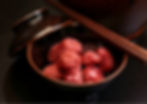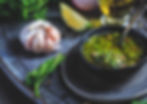
How Different Cultures Preserve Food for Winter Around the World
2
20
0
There’s something undeniably magical about the month of August. The markets are bursting with sun-ripened fruit, vegetable patches are in full bloom, and the air carries that sweet, heavy scent of abundance. It’s the peak of summer—when nature offers its richest gifts—and in kitchens around the world, a quiet, timeless ritual begins.
August isn’t just vacation season. It’s also the season of preparation. Across different cultures and continents, this is the time when families, especially in rural and tradition-rooted communities, begin to “put food away for the winter.” Whether you call it preserving, canning, curing, fermenting, or drying, the idea is the same: to extend the fleeting pleasures of summer into the cold months ahead.
It’s a practice rooted in necessity, but elevated into an art. Grandmothers stirring giant pots of tomato passata, jars lined up in neat rows across farmhouse shelves, hands sticky with plum jam or fragrant with vinegar and spice—these are more than domestic chores. They’re gestures of care, heritage, and resilience. And they connect us not only to the seasons, but to the generations before us.
Me? My favorite seasonal ritual is harvesting an absurd amount of fresh basil—armfuls of it. I wash it carefully, leaf by leaf, dry it out on clean kitchen towels, and then tuck it into freezer bags. No oil, no salt, just pure, fragrant basil leaves. All winter long, I open the freezer and it smells like August again. And let's be honest, BASILICO is the best.

From Cavemen to Courtyards: A Deep-Rooted Tradition of Preserving Food
Long before supermarkets and global supply chains gave us strawberries in December and asparagus in September, people had to live—and cook—by the rhythm of the land.
The idea of saving food for later is almost as old as humanity itself; Early humans were already learning to preserve their food—smoking meat over fire, drying fruits in the sun, and storing nuts in cool caves. These techniques weren’t just practical; they were essential for survival, especially during harsh winters or dry seasons when fresh resources were scarce.
In the Middle Ages, preservation methods became more sophisticated and widespread. Without refrigeration, people relied on techniques like salting, fermenting, and pickling to extend the shelf life of meat, fish, dairy, and vegetables. Monasteries were especially skilled at these practices, becoming hubs of agricultural knowledge and preservation know-how.
Meanwhile, wealthier households began investing in large pantries, cold cellars, and spice blends that slowed down spoilage and added flavor at the same time.
But whether in a stone hut or a medieval castle, the idea remained the same: summer and early autumn were crucial windows of opportunity. You gathered what nature gave you, and you prepared—thoughtfully and thoroughly—for the months ahead. That instinct, born out of necessity, slowly evolved into culture, tradition, and even celebration.
Today, we may no longer fear the winter famine, but the ancient rhythm still lingers. In the act of preserving food, we’re not just bottling tomatoes or freezing herbs—we’re echoing millennia of human ingenuity, memory, and seasonal connection.
A Global Pantry: Preserving Traditions Across Continents
While the tools may have changed—vacuum sealers, chest freezers, and dehydrators have taken the place of clay jars and smoky fires—the impulse to preserve the flavors of summer still thrives in cultures around the world. What was once a necessity has become a conscious ritual, blending old wisdom with modern lifestyles. And interestingly, even as global supply chains give us access to fresh produce year-round, many families continue to dedicate time and care to bottling, drying, pickling, and freezing ingredients at their peak.
These traditions aren’t just about food security anymore. They’re about identity, sustainability, seasonality, and taste.
Let’s travel across a few of these places to discover how different cultures still prepare for winter in the age of abundance.
Italy.
In Italy, August and September are canning season. Families transform ripe tomatoes into passata, sun‑dry tomatoes in the Sicilian sun, and jar peaches, apricots, and figs into jams and marmalades. Fermented pickles such as zucchini in vinegar or olive‑oil preserved vegetables are also common, preserving flavor and texture into winter.

Turkey.
In Turkish households, preserving food is deeply cultural. You'll find families sun-drying okra, red peppers, and eggplants, making salça (tomato and pepper paste), and pickling everything from cabbage to green plums. This is a summer-to-autumn ritual that still bonds generations together.

Romania.
In rural Romania, food preservation is essential. Locals make zacuscă (a vegetable spread made with roasted eggplants, peppers, and tomatoes), murături (pickled vegetables), and store massive amounts of homemade jams and compotes. Root cellars are still commonly used to store jars through the harsh winter.

Japan.
Even in modern Japan, people preserve umeboshi (pickled plums), prepare tsukemono (pickled vegetables), and dry ingredients like daikon and shiitake mushrooms. The techniques are ancient, but many are still part of seasonal rituals today.

South Korea.
Every November, Korean families gather for Kimjang, the traditional communal making of kimchi before winter. It’s a UNESCO-recognized cultural practice, and though many buy kimchi year-round, the act of making and preserving it in large batches is still widely practiced.

Sweden
People traditionally pickle herring, preserve cloudberries and lingonberries into jams, and cure meats through smoking or drying.

Morocco.
In Morocco, sun‑drying figs, apricots, and tomatoes is a traditional method to preserve fruits and vegetables. Tagines may also be made in bulk and stored, and olives are cured and preserved for year‑round use. These practices maintain strong connections between seasonal harvest and daily meals.

Argentina.
In the northwest, where indigenous traditions are strong, corn, potatoes, and peppers are often sun-dried or smoked. Chimichurri, Argentina’s iconic sauce, is also sometimes made in large batches and preserved with vinegar and oil for year-round use. These practices remain part of rural life, especially in farming communities where seasonal produce is abundant in summer and scarce in winter.

Back to the Pantry, Forward with Intention
In an age where convenience often overshadows seasonality, returning to the act of preserving food feels almost radical. Yet across kitchens big and small, rural and urban, modern and traditional, people are still picking, peeling, bottling, and storing the summer — not just to keep it alive, but to keep it real.
These rituals bridge the past and the present, turning ordinary ingredients into stories we can taste months later.
Whether you're making plum jam like your grandmother, fermenting kimchi with neighbors, or simply freezing basil like I do, there’s something deeply satisfying in taking part in this quiet, universal rhythm. It connects you to the land, the seasons, and to others — near and far, past and present.

So this August, why not carve out an afternoon to join the tradition? Find what’s in season where you are, choose one small gesture — a jar, a batch, a bundle — and preserve it. You’re not just saving food. You’re saving a moment in time.
And that, in itself, is a beautiful way to taste the world.
With Love Maggy


